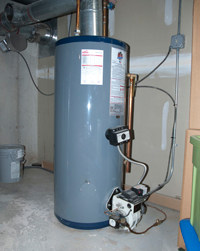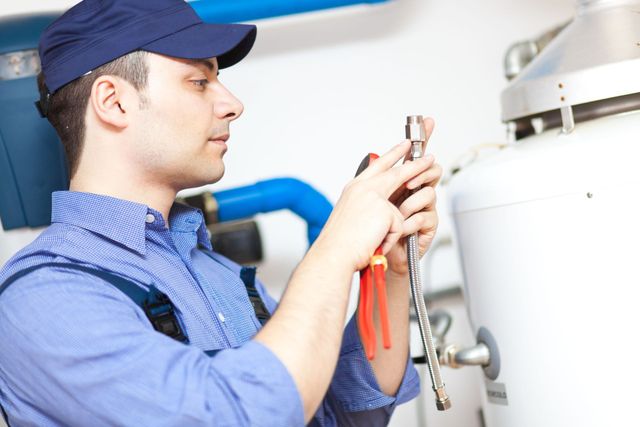We have stumbled on the article involving What Kind of Maintenance Do Water Heaters Need? below on the net and felt it made sense to write about it with you here.

Hot water is necessary for daily comfort, whether it's for a refreshing shower or cleaning meals. To ensure your warm water system runs efficiently and lasts much longer, normal maintenance is crucial. This article supplies practical ideas and understandings on how to keep your home's warm water system to avoid interruptions and pricey repair services.
Intro
Maintaining your home's hot water system may appear challenging, however with a couple of easy actions, you can guarantee it runs smoothly for many years to find. This overview covers every little thing from comprehending your warm water system to do it yourself upkeep tips and understanding when to employ specialist help.
Value of Keeping Your Warm Water System
Normal maintenance not only extends the life expectancy of your warm water system yet also ensures it operates efficiently. Overlooking upkeep can cause lowered efficiency, higher energy bills, and even premature failure of the system.
Signs Your Hot Water System Requirements Upkeep
Understanding when your warm water system needs interest can stop major concerns. Keep an eye out for indicators such as irregular water temperature level, odd sounds from the heating unit, or rustic water.
Purging the Hot Water Heater
Purging your water heater eliminates sediment buildup, improving efficiency and prolonging its life.
Checking and Changing Anode Rods
Anode poles prevent corrosion inside the container. Evaluating and changing them when broken is crucial.
Complex Concerns Calling For Expert Assistance
Examples consist of significant leaks, electric issues, or if your water heater is regularly underperforming.
Routine Specialist Upkeep Advantages
Specialist upkeep can include comprehensive inspections, tune-ups, and making certain conformity with security standards.
Evaluating and Readjusting Temperature Level Settings
Adjusting the temperature settings makes sure optimum efficiency and security.
DIY Tips for Upkeep
You can do several maintenance jobs yourself to maintain your hot water system in top problem.
Checking for Leakages
Routinely examine pipelines and connections for leakages, as these can result in water damages and higher costs.
Comprehending Your Hot Water System
Prior to diving into upkeep tasks, it's handy to comprehend the standard elements of your warm water system. Generally, this consists of the water heater itself, pipelines, anode poles, and temperature controls.
Month-to-month Maintenance Tasks
Routine month-to-month checks can assist capture small issues before they rise.
Evaluating Stress Relief Valves
Examining the pressure relief valve guarantees it functions properly and protects against extreme stress buildup.
Protecting Pipelines
Insulating warm water pipelines reduces warm loss and can save energy.
When to Call an Expert
While do it yourself maintenance is helpful, some concerns require expert proficiency.
Final thought
Normal maintenance of your home's hot water system is vital for performance, longevity, and cost savings. By adhering to these tips and understanding when to look for specialist aid, you can ensure a reputable supply of warm water without unexpected disruptions.
Water Heater Maintenance Tips
Test the TPR Valve
Shut off the power and the cold-water supply valve. Place a bucket under the pipe connected to the temperature-pressure-release (TPR) valve on the top or side of the tank. (This valve opens if the tank pressure gets too high.) Lift the valve’s tab to let some water out, then let go. If water keeps flowing, drain the tank partway, unscrew the old valve with a pipe wrench, and install a new one. Check the Anode Rod
Put a hose to the tank’s drain cock and let out a few gallons of water. Now fit a 1 1/16-inch socket onto the rod’s hex head on top of the heater (or under its top plate) and unscrew the rod. If it’s less than ½ inch thick or coated with calcium, buy a new one, wrap its threads with Teflon tape, put it back in the tank, and tighten securely. Use this segmented rod if headroom above the tank is limited. Drain the Tank and Wash Out Sediment
Drain the remaining water in the tank into the bucket, then stir up the sediment on the tank’s bottom by briefly opening the cold-water supply valve. Drain and repeat until clean water comes out of the hose. Close the drain cock, refill the tank, and turn its power back on. Adjust the Temperature
Find the temperature dial on the side of the tank and unscrew its cover. Adjust the dial to 120 degrees using a flathead screwdriver. For every 10 degrees the temperature is lowered, you can expect to save up to 5 percent in energy costs. Turn the water heater off or the thermostat down to its lowest setting if you plan to be away from home for more than three days. Insulate the Pipes
Buy some self-sticking 3/8-inch-thick foam pipe insulation that matches the pipes’ diameter. Slide the foam over the hot-and cold-water pipes as far as you can reach. Insulating the cold-water pipe prevents condensation in summer. Peel the tape and squeeze the insulation closed. If the pipe is 6 inches or less from the flue, cover it with 1-inch-thick unfaced fiberglass pipe wrap. https://www.thisoldhouse.com/plumbing/21016402/how-to-maintain-a-water-heater

I was brought to that editorial on How to Maintain Your Water Heater & Prolong its Life from a friend on a different web blog. So long as you appreciated our blog entry if you please remember to pass it around. I value your readership.
At This Website